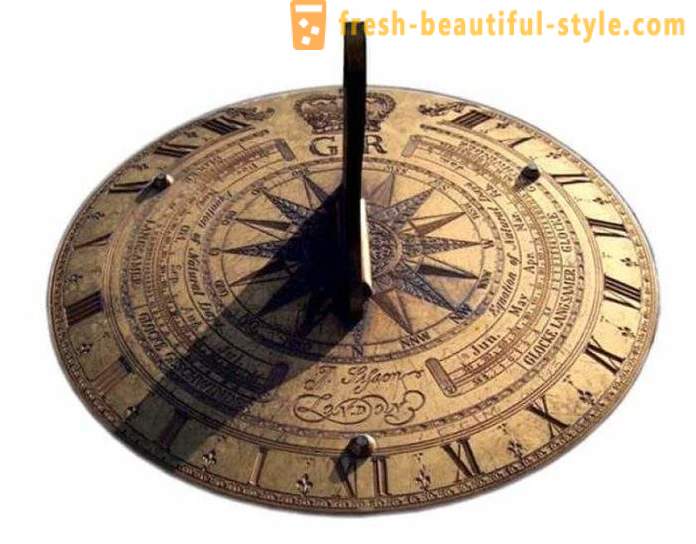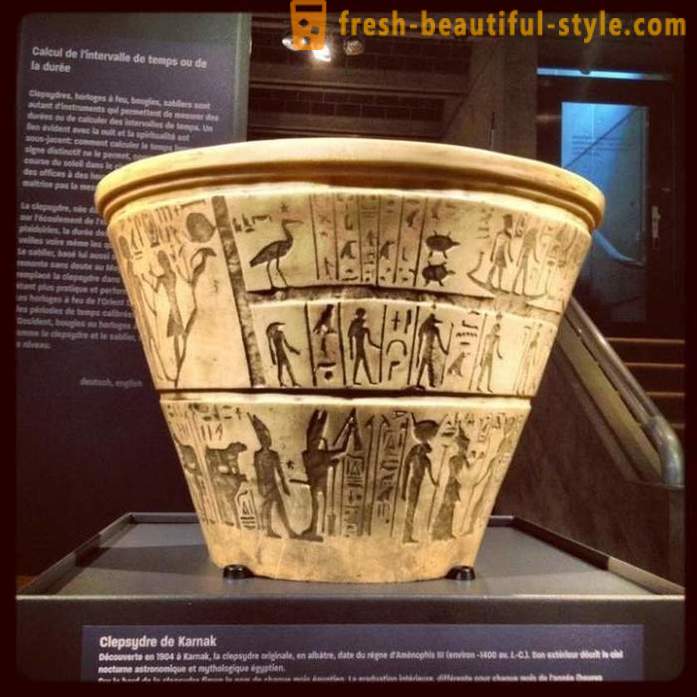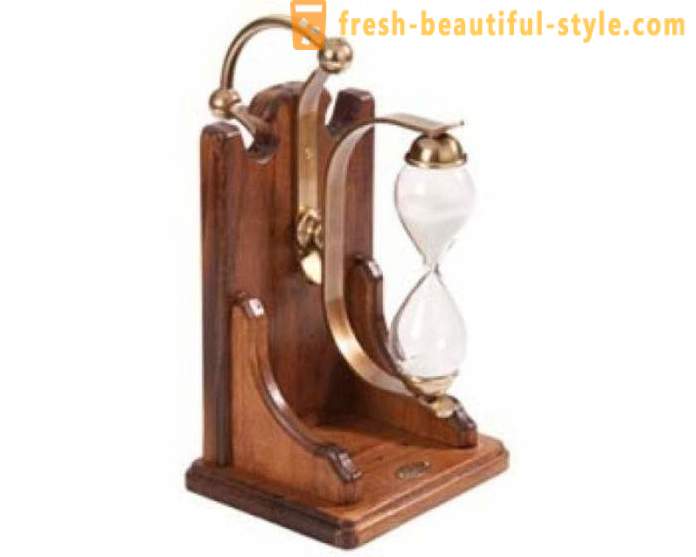As determined time before the invention hours
The watch dial controls the lives of millions of people. He is so firmly entrenched in life that it is difficult to imagine how any one could do without it. Although the ancient people can fairly accurately determine the time, with only a small margin of error. How they succeeded, and what you need to do - in our material.

Gnomon - the sun is shining, it is known to
Before mechanical clocks became widespread, time was determined by a sundial. This device has three parts: the gnomon, then there is an element, casting a shadow dial on which the shadow falls, and another conditional detail - just the sun, and that "gets" these very hours.

are plotted on the dial line, and has a gnomon shape and size, for which are used for calculating the geographic coordinates. Ie every sundial created for a certain location. They manufacturing - a laborious and complex process that requires the knowledge, skills. Because these devices were expensive.
In Russia, there were simple: our ancestors simply dig in the ground high pole, which cast a shadow. Watching the value of the shade, you can determine the time. Of course, this was not the ideal way. But by comparing the length of the shade, for example, in the afternoon, in the evening or at dawn, and measurement of it at different times of the year, our ancestors were quite clear determinant of time.
All would be good if in Russia is constantly shining sun. Unfortunately, it sounds fantastic - rain, clouds and other weather here very often. If you add a feature of the northern regions, where the sun does not rise too high in the sky, making figures and shadow of the gnomon have a very great length, it turns out that the sundial could not be considered as a single, accurate, year-round option.
Clepsydra who steal water
A clock that does not depend on sunlight - water. They are called clepsydra. If you disassemble the word into parts, and it consists of klepto - hide and hydor - water, it is clear that in Greek but means nothing, as "the thief of water". The simplest klepsidra represents two vessel set at different levels. The top has a hole through which a drop of water falls on the bottom. The time was determined by observation of the way the lower water level in the upper vessel, or - as a rise in the ground. There is a version that hence the expression "period of time".

Clepsydra
As the speed of the water affects the pressure in the vessel, the tank began to make in the form of a truncated cone. According to the structure has the advantage over klepsidra sundial as the system of communicating vessels may be brought to perfection. They can be used at any time of the day, they determine the time more accurately.

Modern water clock.
But they can be used only when the water is in the liquid state. Alas, in Russia are often cold, and she could just freeze. Widespread among the population of such designs have not found, they were used mainly during religious rites and were called at the same time "hydrology".
Roosters, larks and flowers for the poor
Watches in Russia have long been a luxury item. Ordinary people use their own methods to do without complex mechanisms. Our ancestors were observant, natural processes have not been to them a mystery.

For example, birds. It is understood that the alarm clock in the old days (yes in many villages even today) was a rooster that crowed three times a night: the first time after midnight, then at two o'clock in the morning, and the last time early in the morning, around the beginning of the fifth. Oriole, lark sparrow - these Ptakha also woke up and began their chants at specific times. One had only to observe, to listen to the advice of the old and remember the time.
The peasants were followed for flowers, because they turned to the sun, bloom and close at certain times. And, of course, the sun itself. Slavs shared day to day and night, focusing on the movement of heavenly bodies. The middle of the day was the afternoon when the sun was at its highest point. The later, the long shadows cast by objects.

In ancient times there was no electricity, illuminate the hut was nothing. Yes, there were candles, but burn them constantly was uneconomical. Because as soon as the sun was setting, at home laying darkness - you can go to bed with a clear conscience. In addition, our ancestors did not need a clear definition of the time, in minutes, seconds. For what? Dawns - you can go to the field, work - before sunset, twilight back to the village. Shepherds, for example, measured the shadow of the tree with the help of bast shoes, worn on the feet. Shadow reached seven bast shoes - you can collect the herd and drive home.
Interested in the process of replacing the temporary spatial concepts, such as: "Does this village -Daleko? - Yes, far away, two days' walk. " The segment, which could pass for one day, called the bottom.
Clear the biological clock
On the biological clock today everyone knows, so-called internal circadian rhythm. For its formation it takes years, with it formed all biological processes of the human organism. We are experiencing a famine, then came time for lunch, to which we are accustomed. We want to sleep - you can look at the clock to make sure that it's midnight (one in the morning, the two, and so on), depending on the habit.

The artist Makovsky. Peasant dinner in the harvest.
Our ancestors lived on a strict routine. Peasant knew that she did not need to call her husband to dinner. He came himself, or was waiting for his wife to the field, as the hard work and the habit of doing their job, and the appetite was played very much.
Rhythm, monotony inherent in life in Russia, following a certain routine, lack of artificial lighting made easy orientation in time and to some extent arbitrary.

Flowers bloom and close at certain times.
Watchmakers began to develop in Russia in the 18th century. This event marked the opening of the "Sentry court" in Moscow. Today the clock is impossible to surprise even kindergartners - so familiar, inexpensive and ubiquitous became the subject.













































